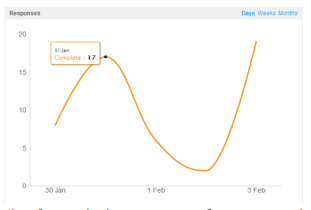Imagine searching through boxes of receipts and statements, trying to find the ones you need to file this year’s income taxes. You’d probably get frustrated, overlook some things, and maybe even find that other items are missing. It’s what many people went through before the advent of the personal computer and apps that automatically categorize expenses.
A data catalog serves the same purpose. It organizes the information your company has on hand so you can find it easily. It also helps with things like GDPR compliance.
By using metadata (or short descriptions), data catalogs help companies gather, organize, retrieve, and manage information. You can think of a data catalog as an enhanced Access database or library card catalog system. It helps you locate and discover data that fit your search criteria.
With data catalogs, you won’t have to waste time looking for information you think you have. Once your information is organized, a data observability tool can take your data quality efforts to the next level by managing data drift or schema drift before they break your data pipelines or affect any downstream analytics applications.
What Does a Data Catalog Do?
A data catalog’s versatile capabilities can create an overview of information from multiple sources or databases. Within that overview, you’ll see the structure of each data set and get a sense of its quality. Data catalogs can contain snippets about the information, including its scope and how your company is using it.
Human resources, for instance, may maintain a list of hotels employees can stay in while traveling for business. That list contains the name of the hotel, address, and contact information. It also has directions on how employees can get reimbursed or whether direct billing is available. But HR also keeps a separate data set on how often employees stay at those hotels and current corporate rates. Catalogs and observability tools can scan both information sets for discrepancies and usage trends.
Some tools are sophisticated enough to auto-correct discrepancies and errors. If someone attempts to update information but makes a typo, cataloging tools can reverse it to the accurate version. This means that they can be ideal for data cleansing and maintenance.
Data catalogs also let employees see the changes in stored and utilized information sets over time. Staff charged with overseeing data integrity and viability can view life cycles of information sets. This includes which groups use and amend data sets the most over various cycles.
What Does a Data Catalog Consist Of?
A data catalog will usually have a search tool, a separate data discovery tool, a glossary, and a metadata registry. The search tool lets employees put in keywords and phrases, returning data sets and metadata that matches.
A data discovery tool moves beyond simple searches. It shows new and older data sets, revealing any changes to the information. Through a data discovery tool, employees see a bigger picture of shifts in the information that matches their parameters.
Business glossaries explain terms connected to different data sets. By looking up these terms, staff members can also locate information across the organization that pertains to them. Metadata registries organize various data sets according to categories and fields. These registries facilitate the efficient location of information.
Advanced data catalogs can update metadata based on the data’s origins. Catalog administrators can use templates to manipulate data fields, properties, and other metadata characteristics. This may be necessary if there’s a need to create documentation or if the nature and use of data evolve.
How Does a Data Catalog Impact Employees?
A data catalog enables staff to find and analyze the information they rely on to fulfill their roles. With a catalog, employees who make changes to data sets and properties can see how modifications impact applications. They can see if there are differences in the data structures between platforms.
Sometimes making a small change to a data structure or property can have unforeseen consequences. It can break reports and impede users’ ability to locate data accurately. At times, staff may need to manually reclassify older data associated with changed properties or fields. A data catalog and observability tool can identify, prevent, and/or mitigate these all-too-common problems.
Other employees may be more concerned with data quality and integrity. Catalogs help them see whether the company manages its data well and modifies sets, platforms, and sources when necessary. This includes retiring and adding variables, in addition to defining standards.
For example, buying lists of people who meet your target market characteristics is now a frowned-upon, outdated standard. Curating lists based on leads and customers who want to receive information from your company is more acceptable.
How Does a Data Catalog Benefit Your Company?
A data catalog makes information more accessible throughout your organization. Instead of employees having to burden IT or higher-ups, they can use the catalog’s tools. Within minutes, staff can find what they need. Catalog tools end up saving time for everyone in the company.
Self-service fosters a data-driven culture, provided the tools do not require technical knowledge. Employees who can get to information and comprehend its implications will learn how it can help shape decisions. When staff members across departments and responsibility levels have the same information, they can speak the same language. Collaborating becomes easier with increased transparency and empowerment.
The point of a data-driven culture is to gain insights from gathered and stored information. Without catalog tools, companies end up spending more time sorting through and organizing data. The time that could be spent drawing conclusions and making connections is wasted on preparing data so it’s usable. Removing preparation and organization time from the equation increases productivity and lets employees concentrate on analytical activities.
Collecting and storing data doesn’t come without risks and responsibilities. Concerns and regulations about consumer privacy are driving what data companies gather and how they store and exchange it. Observability and cataloging tools help businesses stay in compliance with different regulations and protocols, such as HIPAA and the CCPA.
Conclusion
Data catalogs help organizations understand what information is coming in, what’s being stored, and how employees are using it. The tools and features of catalogs allow employees on-demand access and encourage transparency. Staff no longer have to wait days or weeks, wondering whether they’ll get the information they need.
Catalogs can also increase the quality and accuracy of your company’s data. This can lead to an improvement in decision-making quality and collaboration. Without data catalog tools, it’s difficult to know why your organization has the information it does. And whether you’re making strategic decisions based on fact or fiction.











